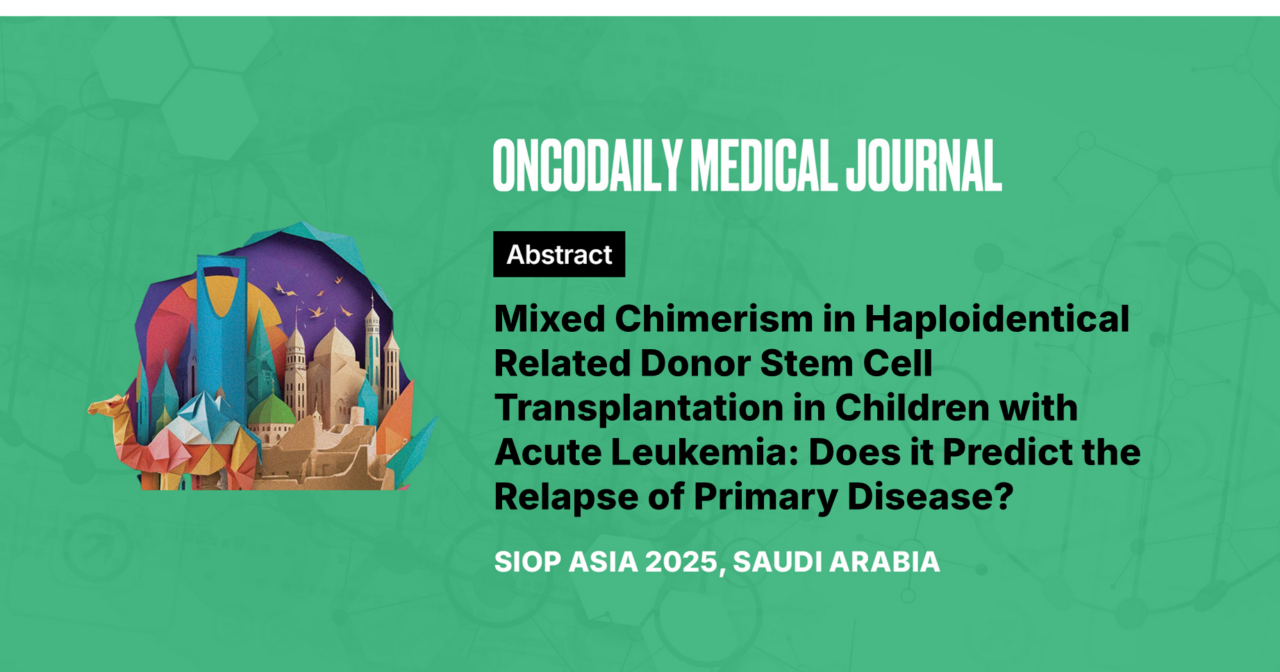Mixed Chimerism in Haploidentical Related Donor Stem Cell Transplantation in Children with Acute Leukemia: Does it Predict the Relapse of Primary Disease?
Abstract
Introduction: Allogeneic hematopoietic stem cell transplantation (HSCT) from an HLA-haploidentical related donor is a suitable option for children with acute leukemia who require HSCT. We aimed to evaluate the association between the lowest sequential mixed donor chimerism (MC; 100% in both lineage vs. <100%) to the relapse of primary disease and survival.
Methodology: 33 patients (F: 14, M:19) underwent allogeneic HSCT from 2017 to 2021; 14(42.4%) with ALL and 19(57.6%) with AML. Median CD34+ cell dose was 7.125X10^6 per kg (2.1-12.0). All patients received GVHD Prophylaxis and myeloablative conditioning (XRT: 10, 30.3%) which included Bu,Flu,Thiotepa: 12 (36.4%), ATG,Bu,Flu,Thiotepa: 11 (33.3%) and Flu,TBI in 10 (30.3%).
Results: In the first year post-HSCT, MC was seen in 6 (18.2%) of 33 cases. Four of these patients died in MC (one 1 within Day+100, three beyond Day+100). Remaining two males with MC were alive. Rate of MC after 3rd year of transplant was 13.3%; 2 out of 15 were alive without graft failure or relapse of primary disease. Remaining 13 patients with FC were alive without relapse.
At a median follow-up of 48.7 months (95% CI: 25.2-72.2 months) and a mortality rate of 33.3% (11 deaths), cumulative probability of five-year overall survival from infusion was 66.4%±8.3%. It was significantly better in FC recorded year+1 (73.7%±8.5%; 7 events of 27) compared to MC (33.3%±19.2; 4 events of 6, P=0.016). Similarly, cumulative probability of five-year event-free survival (event: relapse or death) was significantly better in FC group (73.7%±8.5%; Relapse: 4, Death before relapse: 3) compared to MC group (33.3%±19.2%; Relapse: 3, Death before relapse: 1; P=0.011).
Conclusion: The lowest sequential mixed donor chimerism in year+1 post-HSCT being a predictor of overall and event- free survival.





